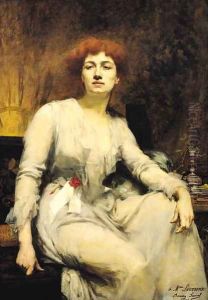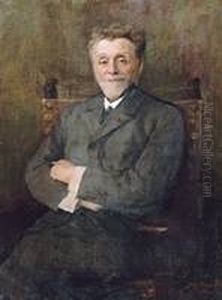Amelie Beaury-Saurel Paintings
Amelie Beaury-Saurel was a prominent French portrait artist of the late 19th and early 20th centuries. She was born on May 5, 1849, in Barcelona, Spain, and later moved to France where she would establish her career as a painter. Beaury-Saurel showed an early interest in the arts and pursued her passion with vigor, carving out a place for herself in a field that was, at the time, heavily dominated by male artists.
She received her artistic training at the Julian Academy (Académie Julian) in Paris, which was one of the few art schools open to women at the time. Her mentor and teacher was Rodolphe Julian, the founder of the academy, and under his guidance, she honed her skills in portrait painting. Beaury-Saurel distinguished herself with her strong technique and sensitivity to her subjects, which often included women of society and children.
Her work gained considerable recognition and was exhibited at the Salon de Paris, where she received positive reviews and accolades. She was known for her ability to capture not just the likeness but also the character and inner life of her sitters. Beaury-Saurel's portraits are often characterized by a refined use of color and a sophisticated handling of light and shadow, which added depth and realism to her paintings.
During her career, Beaury-Saurel became a respected member of the Parisian art community. She was involved with the Société des Artistes Français and contributed to the promotion of female artists. Her marriage to Rodolphe Julian in 1895 strengthened her influence in the art world, particularly in the Académie Julian, where she later became a director.
Amelie Beaury-Saurel's legacy is marked by her contributions to the visibility of women in art during a period when their participation was largely restricted. Her portraits remain a testament to her skill and artistic vision. She passed away on May 23, 1924, in Paris, having left behind a body of work that continues to be appreciated for its elegance and insight into the human condition.

